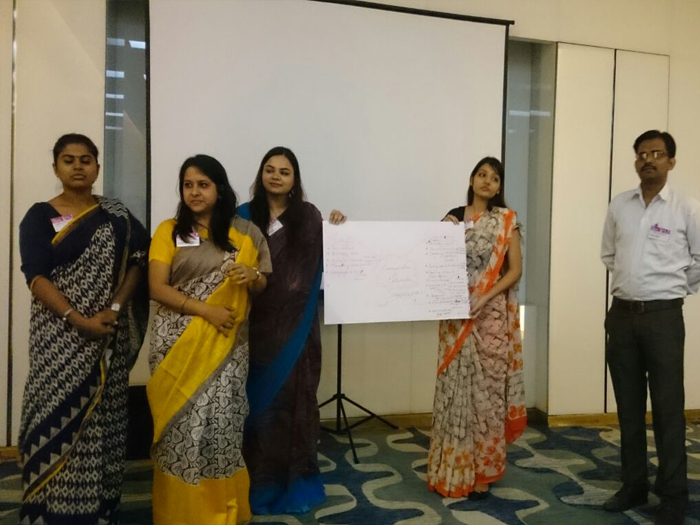British Council Communication and Collaboration Skills Workshop
The British Council organised a two day professional development workshop for educators at Hotel Pullman on 2nd and 3rd September 2016. Close to 250 educators from schools across India participated in the Advanced Module, which was a part of the British Councils Connecting Classrooms Core Skills Programme. The workshop was attended by Ms. Gandharvi Mukherjee and Ms. Ekta Bidhuri from our School. The participants were divided into groups of a50. The topic for our group was Communication and Collaboration.
Communication and collaboration are about fostering effective communication through actively listening to and engaging with others in diverse, multilingual environments and also through non-verbal communication. They are concerned with developing the ability to work in diverse international teams, including learning from and contributing to the learning of others.
The objective of the workshop was to teach the participants how to integrate and develop intercultural and plurilingual communicative and collaborative skills into regular classroom and school activities.
There were a number of interesting and innovative activities lined up for the two days of the workshop.
[gallery link="file"]
The first day of the session began with a video clip, The History of Communication which was created by students for a school project. We were later asked to answer three questions based on our watching of the video-
1. How has communication changed over time, and particularly over the past 30 years?
2. What are the main features of communication today?
3. Do teaching and learning have to change in response to these features?
There were various replies from among the audience, but all commonly highlighted the importance of changing with the changing times.
The three questions certainly set the ball rolling for the workshop! Thus, began our 2 days journey of excitement and learning.
Among the several activities were brainstorming, watching video clips on mind mapping forms of communication and also animated videos which helped us appreciate the interdependence of communication and collaboration for a learning environment. The brainstorming activity required us to categorise the many ways in which we communicate with others, using cards given to us. Through this activity, we got an opportunity to reflect on our communicative and collaborative skills as individuals and as teachers.
On the basis of watching another video clip of a rural school in Kenya, which focused on the use of technology in the classroom, we discussed the positive and negative aspects of technology. The participants shared personal experiences of how they use technology and social media to facilitate communication in the classroom.
Towards the end of the first days session, we were asked to plan a 30 minute classroom or school activity to develop communicative skills among students of 6-7 years of age. Our group planned one for the students of class 2, on the topic Mad Hatters Tea Party, from the famous fairytale, Alice in Wonderland. The intended learning outcome of the activity was to enable students to learn table etiquette and communicate with each other in a fun activity.
On the second day, we discussed intercultural communication and collaboration, and its importance in todays world. The questions for reflection were-
1. What strategies do you use to communicate?
2. Are these strategies effective?
3. Would they work as well if communication was with someone from a different culture?
We reflected on our own experiences of intercultural communication and collaboration and shared them with the other participants. Each one of us actively listened and provided feedback on each others experiences. The next step was to identify barriers to intercultural communication and collaboration and identify ways of overcoming these barriers.
A very inspirational video clip of an intercultural exchange between children in Japan and Kenya was shown to us. The web camera activity in the clip showed how intercultural barriers could be overcome. The students on both sides were given different colours and were asked to draw pictures of things they would associate with the colours. Then they would match their pictures with each other. The students on both sides would get points if the things they drew matched.
The activity clearly brought out the fact that despite language barriers, one can communicate with each other in many interesting ways. It taught how to accept other cultures and build bonds.
Highlighting the importance of communication and collaboration, the innovative group activities made the session a wonderful learning experience. The programme aimed to create great experiences for teachers who would support the development of this skill and create an even greater learning experience for their students.
Ms. Gandharvi Mukherjee.













